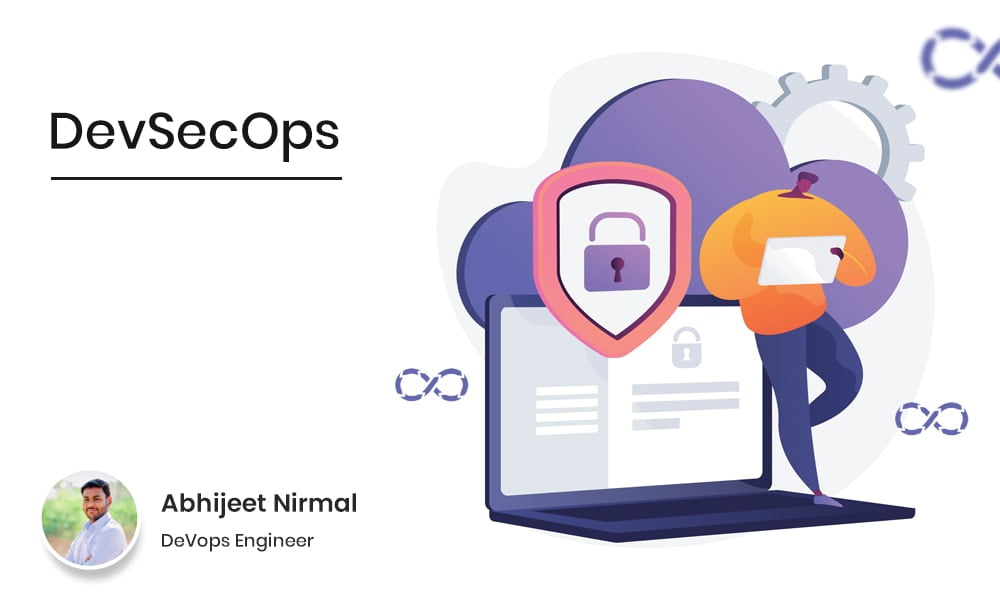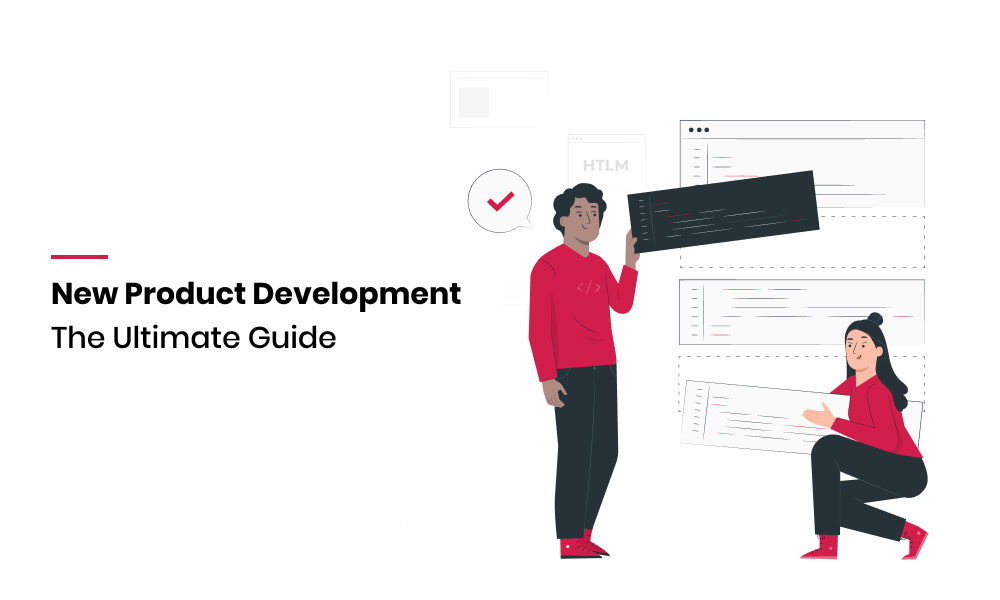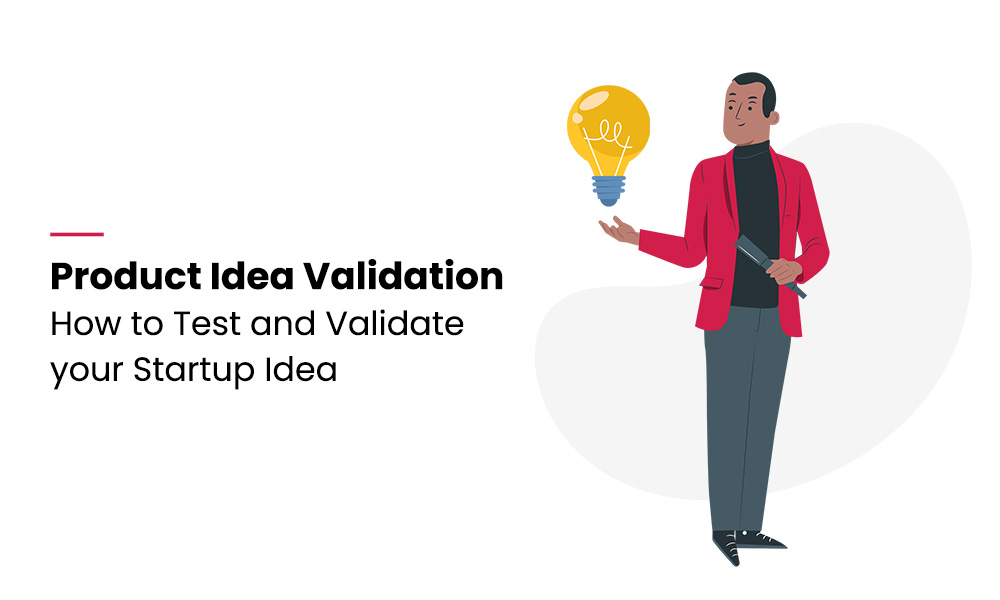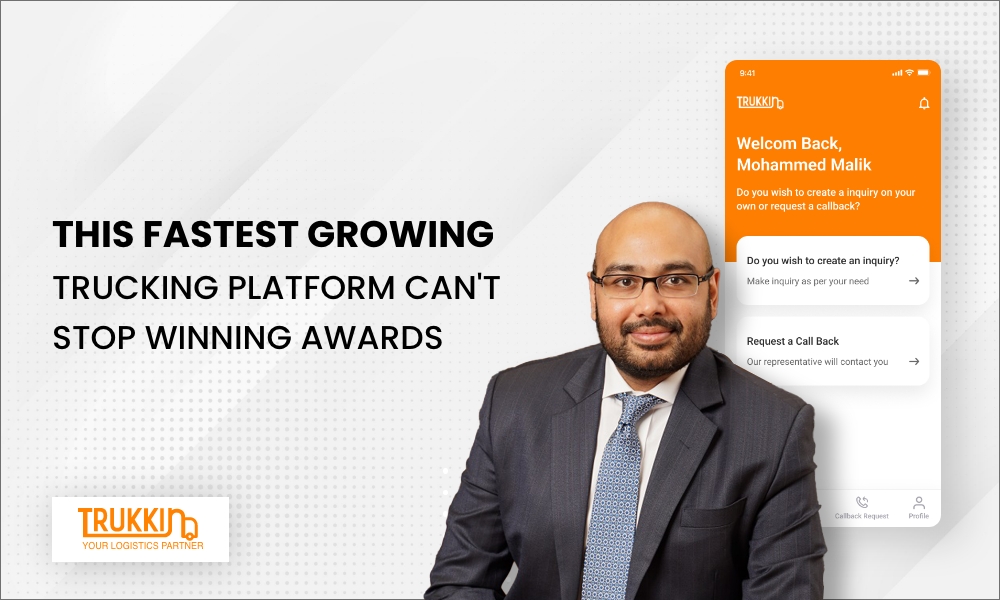Have you started securing your cloud infrastructure with DevSecOps? This blog will help you understand how you can secure your cloud and software development by adapting DevOps security practices, also known as DevSecOps.
Most smart people are taking a DevOps-driven approach to development to improve their coding practices, product maintenance, and feature implementation.
Effective DevOps facilitates frequent and quick development, testing, and deployment cycles, bringing an idea to market in days rather than months or years. However, this agility has ushered in a new challenge for organizations—security.
Traditionally, security had a small role at the final stage of the software development cycle. With traditional development cycles taking months to complete, this was never an issue, but with the advent of DevOps, a lapse in security or outdated security practices can cause bottlenecks and problems for even the most efficient DevOps implementations. The answer to this problem can be found in a cultural change where DevOps was transformed into DevSecOps – making security a collective responsibility of the entire organization, rather than just keeping the onus on one team.
What is DevSecOps or DevOps Security
DevSecOps is a cultural shift that incorporates application and infrastructure security from the outset. This means that security is an integral part of the entire lifecycle of your product or app.
DevSecOps provides security built into every piece of code published, not as security that is limited to securing apps and data. Putting security on the backfoot can quickly bring a DevOps-driven organization back to longer development cycles, defeating the whole purpose of a continuous-everything approach.
Why implement DevOps Security?
Despite the numerous benefits that DevOps offers to development teams today, security remains a challenge as newer vulnerabilities are detected nearly every day. The most important reason to implement and adopt security in DevOps is that it is a modern alternative to traditional security implementations.
As software development cycles become continuous, security must evolve to adapt to these changes from the outset. DevSecOps also builds security into every piece of code that goes into a product—making security built-in rather than being applied at the final stage.
Additionally, this reduces security expenses and helps in speeding up development delivery rates. As collaborations and workflows become transparent and automated, detecting threats and recovering from them becomes easier.
What are the challenges in implementing DevSecOps?
DevOps brings teams together on one platform and encourages collaboration. It also brings the functions of those teams into the fold of DevOps. So development, testing, deployment, infrastructure management, and integration essentially become a part of one process chain responsible for delivering a finished product rapidly.
This means that shorter development cycles can often outpace security teams that must perform security tasks that include configuration management, code analysis, and assessments for vulnerabilities, amongst many others.
If these tasks are not performed efficiently at every stage of the development process, they can lead to backdoors and security breaches that hackers can easily exploit.
- Cultural resistance is a significant challenge in implementing DevSecOps. The notion that security checks will derail or delay the development process puts security at the back door. Still, businesses do not realize that addressing security at the outset can take less time to fix.
- Containerization is essential for boosting productivity in a DevOps environment. However, as container apps run without dependencies, they can also open up a can of worms if not scanned often and effectively for vulnerabilities.
- Access management in collaborative teams can often leave critical information that includes SSH keys, APIs, and tokens up for grabs. As critical assets may often have unsecured open-source platforms, apps, and containers, they can expose your app to threats.
What is the solution for these DevOps security challenges?
Security concerns are real—and can cause data theft, identity theft, and loss of data. This concern was experienced first-hand by Equifax, which was due to a configuration issue, or in the case of Veeam where unsecured user data was up for grabs or LinkedIn—when millions of users could not log in due to expired certificates.
The solution lies in DevSecOps—and best practices that will help your organization achieve the perfect balance between security and agility.
DevOps security best practices
DevSecOps best practices are important to reduce unwanted security lapses. Although there are no set rules that can define the perfect DevOps implementation that is optimized for security, here’s what your organization can do to ensure DevOps Security with every line of code:
1. Embrace the DevSecOps model
The DevSecOps model irons out team misalignment, incidents of insecure code floating around, misconfiguration, unsecured passwords and certificates, and application security. Implementing and embracing this model means that your entire organization will collectively share the responsibility for security, accountability, and alignment across teams.
2. Policy enforcement
A no-exception approach to policy enforcement is essential to achieve DevOps security. Transparent cybersecurity policies must be easy to understand and implement, helping teams plan tasks according to the security policy requirements.
3. Automation for security processes
Scaling security to DevOps processes requires automated security tools. Automation also minimizes risk from human error, reduces downtime, and facilities a much deeper penetration of security practices.
4. Comprehensive discovery
It is essential to constantly validate and discover all the tools, devices, and accounts in use. This improves visibility and brings your assets and tools in line with your security policy.
5. Vulnerability assessment and management
A strict vulnerability assessment and management regimen will ensure that both development and integration environments—including those within containers are scanned for, assessed, and remediated before being deployed to production. This ensures that DevOps security can efficiently run penetration testing and other types of security testing.
6. Managing configurations
Any oversight or mistakes in configurations can quickly multiply in scale if not detected and fixed in time. Continuous configuration scans across servers and builds will ensure that handling any misconfiguration is in accordance with policy and industry practices.
7. Access management
Often, DevOps secrets such as privileged account credentials, SSH Keys, API tokens, etc., are used by developers or applications, containers, microservices, and cloud instances. If the management of these secrets is improper, they can quickly provide attackers access to your applications or your cloud infrastructure. This can result in disrupted operations, information theft, and in extreme cases—the loss of control over your infrastructure.
All credentials must be removed or secured at a centralized location. Using privileged password management solutions which use API calls to give apps and scripts access control is a better approach. It can easily be automated to be in line with your security policy.
8. Monitor, control and audit
Entire teams can often have privileged access to the root or admin. These credentials can easily be shared, eliminating the possibility of an audit trail in case of a breach or a major incident.
The principle of least privilege and enforcing this principle by a policy will ensure that internal or external attackers do not have the credentials to exploit these privileged user rights.
Additionally, a simple workflow that does not demand such high-level access will reduce the possibilities of attacks. Teams should only have access to build, deploy, configure and address production issues.
9. Segmenting networks
Segmenting or categorizing networks and assets can reduce exploitable resources in the “line of sight” for intruders. Grouping assets, application servers, and resource servers into untrusted logical units reduce the chances of an infrastructure-wide attack. If your application must cross trust zones, provide access via a secured jump server fortified with multi-factor authentication and adaptive access authorization. Additionally, using session monitoring for oversight and segment-access-based control for requested data, role and apps provide an additional level of control.
What are the various tools used in DevOps security?
Engineers managing DevSecOps or DevOps security at Volumetree rely on enterprise-grade cloud security tools to ensure compliance and test implementations for vulnerabilities. Some of these tools include:
1. Rapid7 Nexpose
Our DevOps security engineers use Nexpose as an end-to-end vulnerability lifecycle detection and management tool. Data from Nexpose is analyzed to highlight issues with out-of-date packages and other security problems.
2. Suricata
Suricata is a fantastic open-source container and cloud network threat detection tool. Suricata facilitates real-time network traffic, cloud security, and threat inspection using rules, a signature language, and scripting tools.
3. Claire
DevSecOps engineers at Volumetree use this CoreOS project to scan for vulnerabilities in Docker containers. Claire showcases container vulnerability by comparing the vulnerability data from multiple sources to the contents of your container.
4. Snyk
Sync enforces code hygiene at Volumetree. Used to scan open-source libraries that our developers integrate into their solutions, this fantastic tool can integrate with GitHub and request patches to automatically fix issues so that engineers can integrate libraries in production with confidence.
5. Stethoscope
Stethoscope provides visibility into hardware security. Netflix developed this open-source tool that helps security teams to better manage end-user security for DevOps teams. This tool tracks and makes disc encryption recommendations, update management and screen locks so users can self-manage device security.
Conclusion
DevSecOps puts application and infrastructure security first. DevSecOps attempts to accomplish this by automating some security gates to keep the DevOps workflow from slowing down.
DevOps teams can continue to be highly agile by selecting the right tools to integrate security continuously. However, DevOps security is not just a collection of new tools. It is a cultural change throughout the organization that will positively impact the release of highly secure products. DevSecOps builds end-to-end security into app development, helping to attain the goal of continuous everything without compromise.
Secure your valuable apps and cloud infrastructure with DevSecOps. Get started by scheduling a call with our DevSecOps experts today!








Hello. [url=https://commision.biz/]casino online[/url]
Have you ever considered writing an e-book or guest authoring on other websites? I have a blog based upon on the same subjects you discuss and would love to have you share some stories/information. I know my readers would appreciate your work. If you’re even remotely interested, feel free to send me an e-mail.
I’ve been exploring for a little bit for any high quality articles or blog posts on this kind of space . Exploring in Yahoo I at last stumbled upon this website. Studying this information So i’m glad to exhibit that I have an incredibly good uncanny feeling I discovered just what I needed. I such a lot indisputably will make certain to do not omit this website and provides it a look regularly.
best allergy medication for itching best prescription allergy pills best non prescription allergy medication
super strong sleeping pills phenergan cost
buy generic prednisone 20mg deltasone 20mg for sale
common medications for nausea glucophage 1000mg usa
most effective acne pills ranked acne medications list best medication for acne
best med for stomach gas order accupril without prescription
cost accutane 20mg accutane where to buy accutane 10mg pill
cheap sleeping pills online buy generic modafinil
buy amoxil 250mg buy amoxicillin 250mg online oral amoxicillin 1000mg
buy azithromycin 250mg online cheap azithromycin 250mg usa buy zithromax paypal
purchase gabapentin for sale buy gabapentin 800mg without prescription
I dugg some of you post as I cogitated they were handy handy
cost azithromycin azipro order online azithromycin price
cheap lasix 100mg buy furosemide pill diuretic
prednisolone 20mg over the counter omnacortil without prescription omnacortil 20mg without prescription
prednisone 5mg canada buy prednisone 5mg without prescription
amoxicillin tablet how to get amoxicillin without a prescription buy amoxil without prescription
order acticlate online cheap oral vibra-tabs
albuterol 4mg over the counter cost albuterol albuterol 2mg without prescription
oral augmentin order augmentin 625mg
buy generic synthroid synthroid 100mcg over the counter synthroid without prescription
vardenafil 20mg oral vardenafil 20mg price
cost serophene clomid 50mg cost buy generic clomid 50mg
order generic rybelsus 14mg semaglutide 14 mg sale buy semaglutide 14mg generic
buy cheap zanaflex zanaflex drug tizanidine 2mg cost
Greetings! Very helpful advice on this article! It is the little changes that make the biggest changes. Thanks a lot for sharing!
Great beat ! I wish to apprentice whilst you amend your website, how could i subscribe for a weblog site? The account aided me a acceptable deal. I were a little bit acquainted of this your broadcast provided vibrant clear concept
deltasone 40mg over the counter cheap prednisone generic deltasone 10mg
order semaglutide 14 mg online buy generic rybelsus 14mg buy rybelsus 14 mg online cheap
purchase accutane generic isotretinoin pills accutane pills
albuterol usa buy albuterol sale buy albuterol 4mg for sale
order amoxicillin 500mg generic amoxil 250mg canada amoxicillin tablets
buy clavulanate generic cheap augmentin amoxiclav online
azithromycin pill oral zithromax zithromax 500mg uk
oral levoxyl levoxyl online buy levothroid medication
buy omnacortil 5mg prednisolone ca brand prednisolone 20mg
oral clomid buy clomiphene sale order clomid pills
gabapentin 100mg drug cheap gabapentin sale gabapentin 800mg without prescription
viagra 100mg pills viagra 100mg order sildenafil 100mg generic
buy lasix 40mg online buy cheap generic furosemide buy lasix sale
brand semaglutide rybelsus generic semaglutide cheap
purchase monodox sale doxycycline price buy doxycycline generic
purchase vardenafil generic order vardenafil generic buy generic vardenafil 10mg
free blackjack games gambling casino online global poker online
plaquenil 400mg usa buy plaquenil 200mg for sale buy hydroxychloroquine pill
buy generic lyrica over the counter buy pregabalin 75mg online cheap pregabalin brand
buy triamcinolone 4mg for sale buy triamcinolone 4mg online aristocort 10mg cheap
order cialis 20mg online generic tadalafil 20mg cost tadalafil 5mg
order clarinex generic desloratadine desloratadine 5mg uk
purchase cenforce online oral cenforce 100mg buy cenforce medication
cialis from canada pharmacy Canadian Pharmacy Shipping Usa Cialis, Viagra Whithout Prescription – Canadian ED Drugstore canadianphrmacy23.com
legitimate online pharmacies india [url=http://canadianphrmacy23.com/]Read This[/url]
brand aralen 250mg brand aralen chloroquine pill
claritin 10mg ca cheap claritin 10mg buy loratadine medication
glycomet 1000mg oral order glucophage 500mg without prescription order glucophage 1000mg online cheap
buy priligy sale order misoprostol 200mcg online cheap order misoprostol pill
orlistat price diltiazem 180mg generic diltiazem 180mg brand
order atorvastatin 10mg without prescription buy cheap atorvastatin order lipitor 80mg generic
buy norvasc 5mg generic order norvasc 10mg pill order amlodipine
zovirax where to buy purchase zovirax where to buy allopurinol without a prescription
purchase prinivil pills lisinopril 2.5mg without prescription where to buy lisinopril without a prescription
cialis from canadian pharmacies visit the site
overseas pharmacy [url=http://canadianphrmacy23.com/]site here[/url]
crestor 20mg sale order ezetimibe 10mg buy ezetimibe
prilosec 10mg us buy omeprazole online prilosec 20mg generic
order motilium order sumycin 500mg pills sumycin 250mg ca
buy lopressor 100mg pills lopressor 100mg drug metoprolol online order
flexeril 15mg ca order cyclobenzaprine without prescription ozobax order
Valuable info. Fortunate me I found your site accidentally, and I’m stunned why this coincidence did not came about in advance! I bookmarked it.
order atenolol 50mg generic atenolol 100mg us atenolol 100mg price
order toradol 10mg online cheap buy gloperba generic gloperba without prescription
medrol 8 mg tablet oral depo-medrol cost medrol australia
writing paper online buy nothing day essay buy a dissertation
purchase inderal for sale buy inderal 10mg online generic plavix 150mg
buy methotrexate 2.5mg online cheap brand methotrexate warfarin price
purchase meloxicam generic purchase celebrex celecoxib brand
metoclopramide price order losartan 25mg online order cozaar 50mg
tamsulosin 0.4mg us buy flomax sale celecoxib online
This web site is really a walk-through for all of the info you wanted about this and didn’t know who to ask. Glimpse here, and you’ll definitely discover it.
Great goods from you, man. I have take into account your stuff previous to and you’re simply too wonderful. I actually like what you’ve bought here, really like what you are stating and the way during which you say it. You make it enjoyable and you still take care of to stay it sensible. I cant wait to read much more from you. This is actually a wonderful site.
You could definitely see your skills in the work you write. The world hopes for more passionate writers like you who aren’t afraid to say how they believe. Always follow your heart.
nexium for sale order topiramate topamax 200mg oral
purchase zofran pill buy generic zofran 8mg spironolactone over the counter
buy generic sumatriptan for sale cost levofloxacin 250mg order levaquin 250mg for sale
purchase simvastatin online buy valtrex generic valacyclovir generic
avodart 0.5mg canada dutasteride over the counter zantac 150mg us
acillin canada buy cheap penicillin purchase amoxil online
order proscar 5mg pills buy propecia 1mg sale order generic fluconazole 200mg
buy baycip paypal – buy augmentin 375mg generic buy generic augmentin online
ciprofloxacin 500mg usa – keflex 250mg cost order augmentin 1000mg sale
ciplox 500mg for sale – buy trimox 250mg generic
erythromycin 250mg for sale
order generic metronidazole 200mg – buy oxytetracycline cheap buy zithromax 500mg for sale
stromectol for sale online – brand ceftin sumycin uk
order valtrex pill – valacyclovir 500mg price order zovirax online
ampicillin cheap purchase ampicillin generic purchase amoxicillin pill
What¦s Taking place i am new to this, I stumbled upon this I’ve found It absolutely useful and it has aided me out loads. I hope to contribute & assist different users like its helped me. Great job.
flagyl 400mg for sale – metronidazole 200mg cheap zithromax over the counter
buy furosemide without prescription diuretic – buy coumadin 2mg online order capoten 25mg generic
glycomet 500mg pill – glycomet tablet where can i buy lincomycin
buy zidovudine 300 mg without prescription – purchase avapro zyloprim 100mg usa
order clozaril sale – cheap accupril 10mg famotidine online order
Hi there! I just wanted to ask if you ever have any problems with hackers? My last blog (wordpress) was hacked and I ended up losing a few months of hard work due to no back up. Do you have any solutions to protect against hackers?
buy generic seroquel over the counter – order ziprasidone for sale buy eskalith no prescription
anafranil 50mg pill – buy paroxetine 20mg doxepin sale
generic atarax 25mg – hydroxyzine online buy where to buy amitriptyline without a prescription
cheap augmentin 625mg – ethambutol generic buy ciprofloxacin 500mg
cheap amoxil pill – cefadroxil pills cipro price
azithromycin pills – sumycin 250mg price how to buy ciplox
cleocin 300mg drug – order terramycin for sale chloramphenicol over the counter
Thanks so much for providing individuals with remarkably remarkable opportunity to read articles and blog posts from this blog. It’s usually very brilliant and as well , packed with a lot of fun for me and my office co-workers to search your web site on the least three times weekly to find out the fresh stuff you will have. And of course, we are usually motivated considering the extraordinary advice served by you. Selected 1 areas in this article are in reality the most effective we have ever had.
What is Alpha Tonic? Alpha Tonic stands as a natural health supplement designed to comprehensively address men’s overall well-being.
I’m not sure exactly why but this site is loading extremely slow for me. Is anyone else having this issue or is it a problem on my end? I’ll check back later and see if the problem still exists.
ivermectin pills canada – buy doxycycline medication cefaclor 250mg uk
albuterol for sale – where to buy promethazine without a prescription theophylline canada
F*ckin’ awesome things here. I’m very glad to see your article. Thanks a lot and i’m looking forward to contact you. Will you please drop me a mail?
I simply could not go away your site prior to suggesting that I actually enjoyed the standard info an individual provide in your visitors? Is going to be again frequently in order to inspect new posts.
You made some nice points there. I did a search on the subject and found most persons will consent with your website.
It is really a great and helpful piece of info. I am glad that you shared this useful info with us. Please keep us informed like this. Thank you for sharing.
depo-medrol over the counter – order fluorometholone eye drops buy azelastine 10 ml sprayer
Greetings! Very helpful advice on this article! It is the little changes that make the biggest changes. Thanks a lot for sharing!
Hi, just required you to know I he added your site to my Google bookmarks due to your layout. But seriously, I believe your internet site has 1 in the freshest theme I??ve came across. It extremely helps make reading your blog significantly easier.
cheap desloratadine 5mg – buy albuterol online albuterol medication
My developer is trying to convince me to move to .net from PHP. I have always disliked the idea because of the costs. But he’s tryiong none the less. I’ve been using WordPress on a variety of websites for about a year and am worried about switching to another platform. I have heard fantastic things about blogengine.net. Is there a way I can transfer all my wordpress posts into it? Any kind of help would be really appreciated!
micronase generic – order forxiga online cheap order dapagliflozin 10 mg pills
Howdy very cool website!! Guy .. Beautiful .. Wonderful .. I will bookmark your blog and take the feeds also…I am satisfied to find a lot of useful info here within the put up, we need work out more techniques in this regard, thank you for sharing.
glucophage uk – precose 50mg pill purchase precose online
purchase prandin online cheap – buy empagliflozin pills buy empagliflozin pills